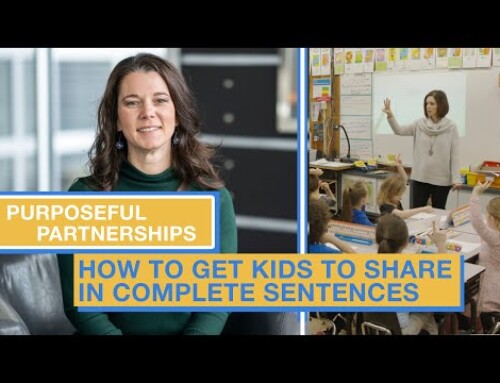**Teacher Note**
Blind Dictation is referenced in the video as one of the routines you can use for word sorting. Dictation as itself an instructional tool is modeled in the classroom video. Both are substantial opportunities for students to develop encoding ability.
Hi I’m Kim Wakefield with Side-by-Side Educational Consulting, where we work side by side with educators to improve outcomes for all kids. Our next spelling strategy that you can add to your instructional toolkit is dictation. Dictation is definitely worth your time! Dictation is a very teacher directed activity that allows for students to receive immediate feedback on how they spell words. Remember we talked about that Monday through Friday scope and sequence that is in our resources? Dictation is going to fall in the middle of our process, so after students have initially been introduced to the sounds, through their sound spelling cards, and then had multiple opportunities to practice sorting those words, based off of the sounds they hear in their spellings, then we’re going to move into dictation. Dictation is moving to the goal: are students able to transfer the work they’ve done earlier in the week to spelling. So the process of dictation is:
A teacher says a word. For instance, if I was working on the sound spelling /A/ spelled ai, and /A/ spelled ay in one week. I had spent lots of practice opportunities in the week having kids sort different words with the /A/ sound, a spell either ai or ay. Now what kids will notice is that ai generally comes in the middle of a word where ay will generally come at the end. Once students have had lots of opportunities to manipulate words with their sound Spelling’s earlier in the week. By the time you get to dictation in the middle of the week. They can think back to the work that they’ve done, and are able to write words without seeing them. Dictation looks like this:
Students have divided their piece of paper into two columns and one column they have the sound. /A/ spelled ai, and on the next column they have the sound /A/ spelled ay. As a teacher dictates the words, for example, if the teacher says the word chain. Students will repeat the word chain, then they had to decide does chain fall in the column ai, or does chain fall in the column ay. Thinking back to the work they’ve done earlier in the week, students should be able to differentiate sound spellings because they know ai generally comes in the middle of a word like chain, and not the end. So students would write the word chain in the ai column and then the teacher would write the word chain up on her board or under a document camera so they can see, are they accurate. We don’t want students to be practicing incorrectly without that immediate feedback. If a student makes a mistake, you know what I always tell my kids: Mistakes are okay. It’s how we learn. They simply cross out the word chain in whichever column they wrote it in. Write it in the new column (or the same column if they missed a different sound spelling in the word.) Writing it again, beginning to end, really helps kids to be able to map those sound spelling correspondences in the order they belong.
That’s just a quick look at what dictation looks like, you could go through several words in your word list that you have for the week. I would highly encourage you not to just stick to the words that are given to you in your word list, but to differentiate by finding other words that follow the same sound spellings that you’re working on, so that you can reach all levels of kids in your classroom.





